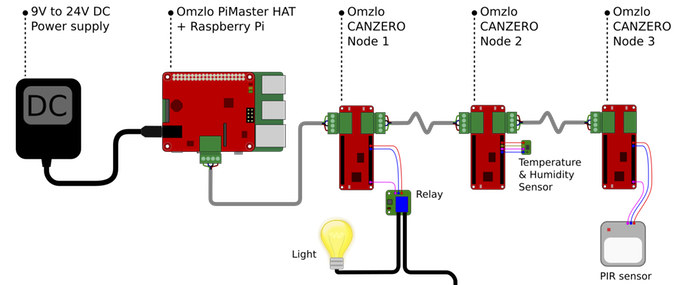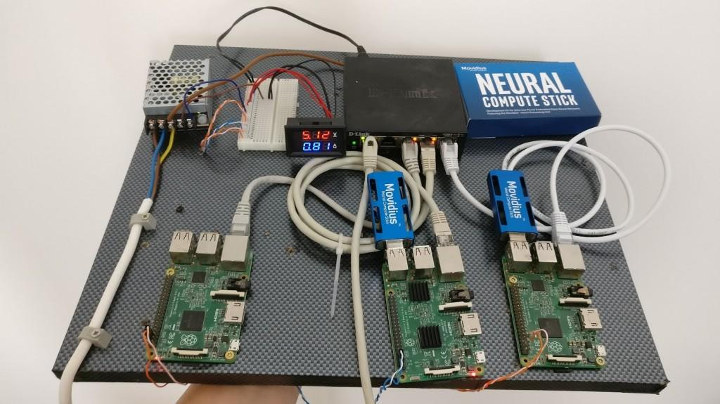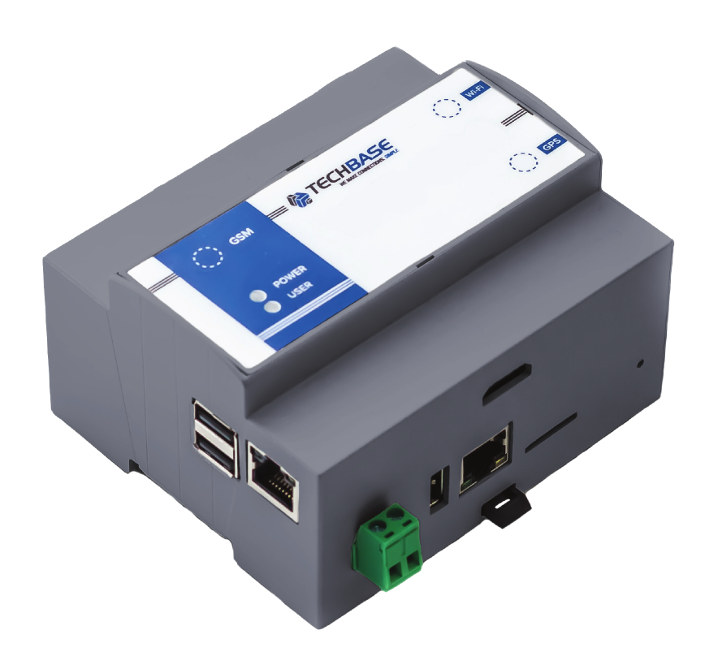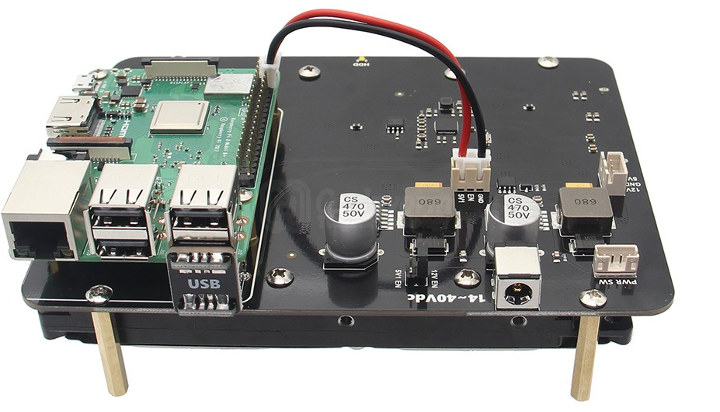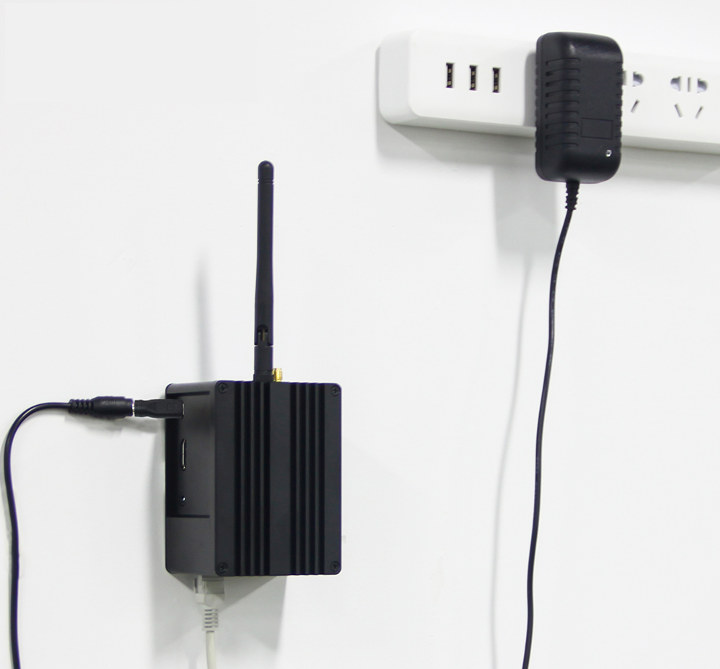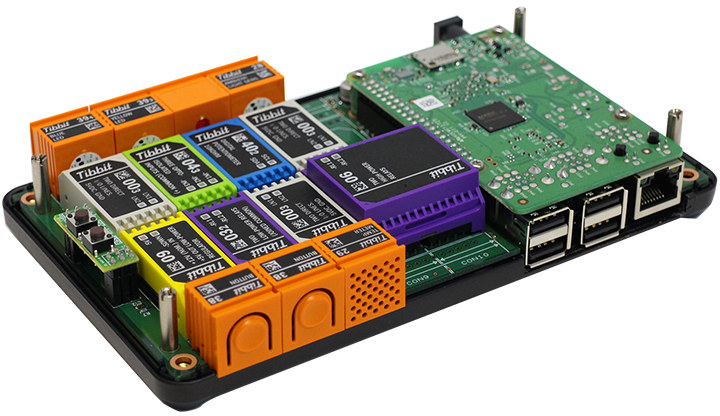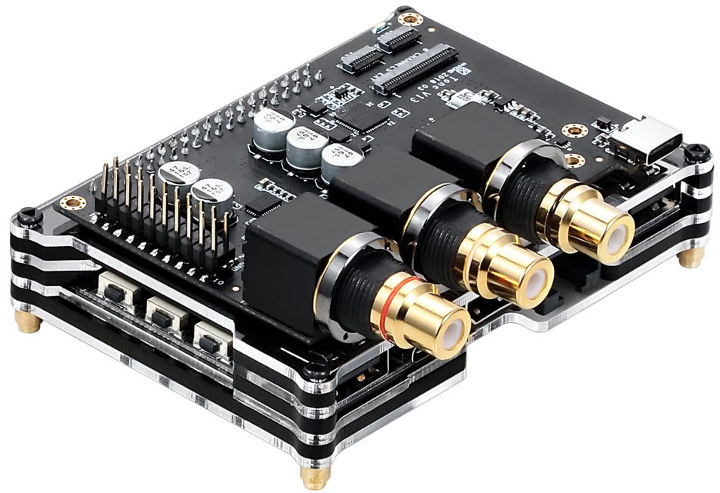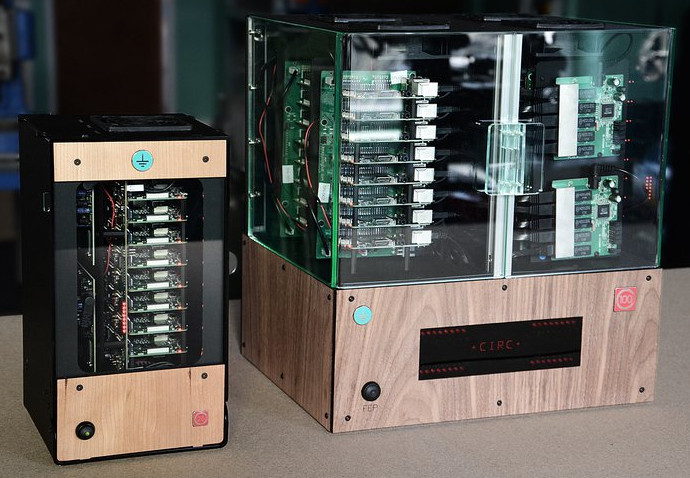Many IoT projects rely on wireless connectivity through WiFi or Bluetooth, but in some cases it may be more reliable and convenient to use wired connectivity. The CAN Bus is a little like a low bandwidth Ethernet PoE solution for IoT, as it allows to transfer data over a serial connection while provided power at the same time, and can be daisy chain to support multiple boards. Omzlo’s NoCAN IoT platform provides a CAN bus solution leveraging Raspberry Pi 3 board through their PiMaster HAT acting as a CAN bus gateway, and Arduino compatible CANZERO boards to which you can connect sensors and actuators. Omzlo PiMaster HAT specifications: MCU – STMicro STM32F042 Cortex-M0 32bit ARM MCU – 48Mhz. Networking – 125000 bps CAN bus up to 300 meters range GPIO – Communicates with Raspberry Pi through SPI + GPIOs Security – Smart power switch with over-current protection. Power Supply – […]
Raspberry Pi 3 and Movidius Neural Compute Stick to the Rescue Against Child Pornography
Warning note: While there won’t be any NSFW photos in this post, there will be some photos of ladies in light clothing (e.g. bikini) and “naked” animals for testing purpose… Intel released Movidius Neural Compute Stick allowing low power image recognition at the edge earlier this year, and we’ve seen it work just fine with Raspberry Pi 3 board delivering three times the performance against an inference solution leveraging VideoCore IV GPU. Christian Haschek owns a photo hosting site (PictShare) which happens to run open source code with the same name, and allows user to upload images anonymously. However, he soon found out that at least one user uploaded some child pornography. He contacted the authorities, but then wondered whether there may be others? Since there are simply too many photo on the website to look it up manually, he decided to look for a solution, and went with a […]
ModBerry M500 Industrial Computer Upgraded to Raspberry Pi 3 B+ with PoE Support
TECHBASE has been making modular industrial computers based on hobbyist boards for several years with products like ModBerry M300 IoT Gateway. ModBerry M500 is another of their model, powered by a Raspberry Pi 3 board and launched in 2016. The company has now upgraded the industrial gateway to Raspberry Pi 3 B+ board, and added PoE support in the process. ModBerry M500 specifications: SoC – Broadcom BCM2837B0 quad-core Arm Cortex-A53 processor @ 1.4 GHz with VideoCore IV GPU System Memory – 1GB DDR3 Storage – 8GB micro SD card Video & Audio Output – HDMI 1.4 and 3.5mm jack for CVBS (composite + stereo audio) Connectivity Gigabit Ethernet (max 300 Mbps) Dual band 802.11 b/g/n WiFi and Bluetooth 4.2 LE Optional Zigbee, LTE/3G, GPS, WiFi, and Bluetooth cards USB – 2x USB 2.0 host ports Expansion I/Os 2x RS-232/RS-485 4x digital inputs, 4x digital outputs up to 30V DC 1-wire […]
Add a 3.5″ Hard Drive to Your Raspberry Pi with Suptronics X830 Add-on Board
If you ever plan to make your own NAS with an Arm Linux board, the Raspberry Pi board should not be your first choice, as regular readers will already know they are already cheaper and/or better solutions such as NanoPi NEO2 NAS Kit, ODROID HC2, or Popcorn Transformer to name a few. But if you already own one of the Raspberry Pi boards and a 3.5″ hard drive, you considering going with Suptronics X830 add-on boards – also sold under Geekworm brand – instead of a DC powered USB enclosure since it avoids extra cabling and the use of two power supplies. SupTronics X830 board features: SATA connector for 3.5″ SATA drive up to 10TB implemented via USB 3.1 Gen1 to SATA 6Gb/s bridge controller USB 3.0 port to connect to Raspberry Pi board Power Supply Input – 14 to 40V DC input via 5.5/2.5mm power barrel jack (Powers the […]
RAK831 Lite is a $200 LoRa / LoRaWAN Gateway based on Raspberry Pi 3 Board
RAK831 is a Semtech SX1301 based LoRa gateway module that was released by RakWireless in 2017. The board has since then be sold as part of the company’s LoRa gateway developer kit with a Raspberry Pi and a MAX-7Q GPS Module. But now RakWireless offers a nicely packaged solution with Raspberry Pi 3 board, RAK831 module, a GPS board, an enclosure, antenna, and power supply which they call RAK831 Lite, and sells for just $199 + shipping ($6.45 extra here).RAK831 Lite gateway main components and specifications: Main board – Raspberry Pi 3 development board with Broadom BCM2837 processor, 1GB RAM, micro SD card slot, Fast Ethernet, 4x USB ports, HDMI output, audio jack Connectivity RAK831 LoRa Concentrator board based on SX1301 chipset RF frequencies – 433, 470, EU868, AS923, AU915, and US 915 Rx Sensitivity – -140 dBm Tx Power – Up to 25.5 dBm at settings 27 dBm SMA […]
Tibbo-Pi is a Wirefree Modular IoT Prototyping Platform for Raspberry Pi Board
Tibbo Project System (TPS) is a modular Linux IoT prototyping platform based on the same Texas Instruments Sitara AM335x processor used in BeagleBone Black or a PocketBeagle boards, and comprised of a main board, Tibbit blocks to add features as needed, and an enclosure. I’ve now been informed the company will be at Computex 2018 to showcase their new products including Tibbo-Pi, following the same concept as Tibbo Project System, but leveraging Raspberry Pi 3 board and ecosystem instead. While an English brochure is said to be available, all information in the webpage listed in the photo above is in Japanese. But basically, Tibbo-Pi is said to be an IoT edge device for industrial use, made for build a prototypes, or small scale production system thanks to a choice a 60 different Tibbit Blocks sensor and I/O module blocks, all wire free. Programming of the system is typically done with with […]
Khadas Tone High Resolution Audio Board is Designed for Khadas VIM/VIM2, PCs, and Other SBCs
Khadas VIM and Khadas VIM2 are development boards powered respectively by Amlogic S905x and S912 processors that come with decent software support. The company also provides application specific add-on boards for their SBCs, and a while ago, I reviewed VIM2 with their dual tuner board and showed how to stream videos from my satellite dish or terrestrial antenna to the local network. Their latest solution is Khadas Tone board for high-quality audio applications. Khadas Tone “VIMs Edition” specifications: Multicore MCU – XMOS XU208-128-QF48 with 8x xCORE-200 cores up to 500 MIPS DAC – ES9038Q2M 32-Bit Stereo Mobile Audio DAC THD+N – ≤ 0.000337% @1KHz SNR – ≥ 120dB @ 10Hz~20KHz DNR – ≥ 120dB @ 10Hz~20KHz Crosstalk – ≥ 127dB @ 10Hz~20KHz Frequency Response – ±0.08 dB @ 10Hz~20KHz Sampling Frequency PCM: Up to 768KHz @ 32bit DSD: Up to DSD256 @ 1bit Clock Jitter Reference Clock Jitter < 3ps […]
Circumference Datacentre-in-a-Box Features up to 32 Raspberry Pi 3 B+ Managed by a UDOO x86 Ultra Board (Crowdfunding)
We’ve previously seen several clusters made of Raspberry Pi boards with a 16 RPi Zero cluster prototype, or BitScope Blade with 40 Raspberry Pi boards. The latter now even offers solutions for up to 1,000 nodes in a 42U rack. Circumference offers an other option with either 8 or 32 Raspberry Pi 3 (B+) boards managed by UDOO x86 board acting as a dedicated front-end processor (FEP) that’s designed as a “Datacenter-in-a-Box”. Key features and specifications: Compute nodes – 8x or 32x Raspberry Pi 3 B+ boards for a total of 128x 64-bit 1.4 GHz cores max Backplane MCU – Microchip ATmega1280 8-bit AVR microcontroller Serial Comms – FTDI FT4232 quad-USB UART Switched Mode Power Supply Units (SMPSUs): 8x / 32x software controlled (one per compute node) 1x / 4x always-on (microcontroller) HW monitoring: 8x / 32x compute node energy 2x / 8x supply voltage 2x / 8x temperature Remote […]


